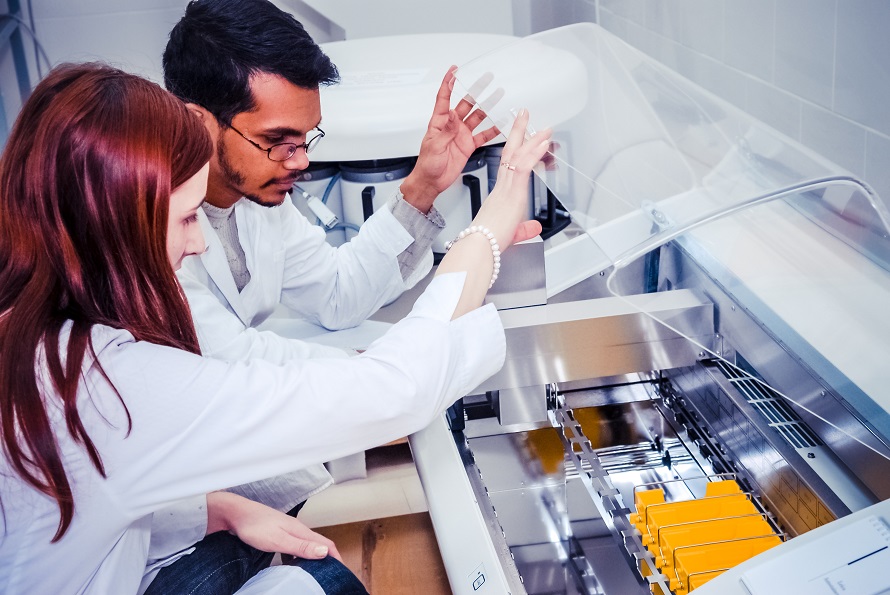Russian students are creating robots and helping doctors.
In the course of study, enrollees both cover theory and conduct scientific experiments. In their first years, they take part in research projects, and the most active seniors often join university laboratories. Naturally, this is more common in bigger universities that have their own research centers.
Student research can be very serious and practically applicable. For instance, students and post-graduates of the Chemistry Dept. of Tomsk State University have developed an efficient way of producing allantoin, a popular ingredient for cosmetics now also used for treating skin diseases. Until recently, allantoin had been imported, but now a local manufacturing facility is proposed to be built.
A team of young scientists at NUST MISIS has developed a portable coffee maker for use in cars. This thermal mug-sized device can brew coffee and serve as a cooler. It is equipped with a magnetic valve which maintains optimum liquid pressure and ensures proper brewing. The battery-powered coffee maker can be controlled remotely via a smartphone.
Students of St. Petersburg State have developed a new electronic stethoscope. It ensures clean and crisp sound at a relatively low production cost, and unlike a traditional stethoscope it can easily distinguish between interference spectra. It will help doctors conduct better diagnostic examinations.
Irina Klimenko, a student of University of Tyumen, is trying to decipher the language of dolphins. She did her research at Karadag Research Station in the Crimea, where she logged and analyzed tonal signals produced by dolphins. It is believed such data will help us crack the code of these wonderful animals’ language. For now, her findings are used in dolphin training.
TPU students have proposed a substitute for a wireless mouse – their small device is worn on a finger like a thimble. Thanks to a sensor attached to her wrist, a user can control a pointer on a laptop screen by moving her finger in the air. In the future, young scientists want to develop a multi-purpose device that could be used for a variety of applications from calibrating spot lights on-stage to controlling backhoe buckets.
FEFU students and post-graduates are developing underwater robots. In 2016, they presented a programmable vehicle capable of autonomous undersea missions. It can also be controlled remotely. FEFU team has repeatedly won prizes in RoboSub, an international robotics competition, since 2012, when they first took part in it.



























































